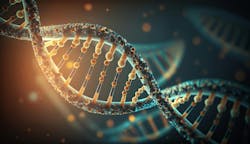AI harnesses tumor genetics to predict treatment response
In a study published on January 18, 2024, in Cancer Discovery, scientists at University of California San Diego School of Medicine leveraged a machine learning algorithm to tackle one of the biggest challenges facing cancer researchers: predicting when cancer will resist chemotherapy.
All cells, including cancer cells, rely on complex molecular machinery to replicate DNA as part of normal cell division. Most chemotherapies work by disrupting this DNA replication machinery in rapidly dividing tumor cells. While scientists recognize that a tumor's genetic composition heavily influences its specific drug response, the vast multitude of mutations found within tumors has made prediction of drug resistance a challenging prospect.
The new algorithm overcomes this barrier by exploring how numerous genetic mutations collectively influence a tumor's reaction to drugs that impede DNA replication. Specifically, they tested their model on cervical cancer tumors, successfully forecasting responses to cisplatin, one of the most common chemotherapy drugs. The model was able to identify tumors at most risk for treatment resistance and was also able to identify much of the underlying molecular machinery driving treatment resistance.
The researchers focused on the standard set of 718 genes commonly used in clinical genetic testing for cancer classification, using mutations within these genes as the initial input for their machine learning model. After training it with publicly accessible drug response data, the model pinpointed 41 molecular assemblies — groups of collaborating proteins — where genetic alterations influence drug efficacy.
After training their model, the researchers put it to the test in cervical cancer, in which roughly 35% of tumors persist after treatment. The model was able to accurately identify tumors that were susceptible to therapy, which were associated with improved patient outcomes. The model also effectively pinpointed tumors likely to resist treatment.
Further still, beyond forecasting treatment responses, the model helped shed light on its decision-making process by identifying the protein assemblies driving treatment resistance in cervical cancer.

